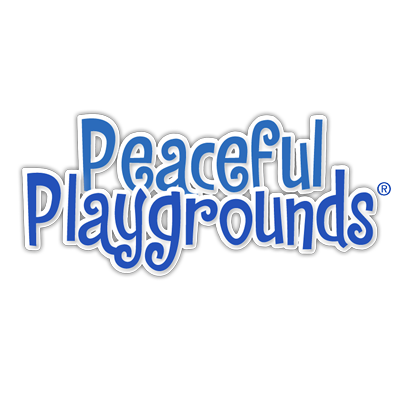IPEMA and National Institute for Play Launch First-of-its-Kind Resource for Scholarly Research about Benefits and Effects of Free Play
Recently, The National Institute for Play, with support from the International Play Equipment Manufacturers Association (IPEMA) published the first round of academic research surrounding the benefits of free play on the newly-created Encyclopedia of Play Science. The Encyclopedia establishes the field of play science and is free and open to the public, providing valuable resources for those interested in the science behind the free play movement. Free play is the state in which children combine creative, imaginative and social play in an unstructured environment as in nature or at a local playground.
“We’re extremely gratified to see this important project coming to fruition,” said Randy Watermiller, IPEMA President. “Those of us in the playground industry know how critical play is to child development – we hope this resource will help us further reinforce to the general public how truly important it is to prioritize play.”
The Encyclopedia is live on Scholarpedia, a wiki-based online encyclopedia housing peer-reviewed academic articles. It is the first-known database of scientific, academic research that demonstrates the scientifically proven benefits of play.
“The purpose of the Encyclopedia is to, through the prodigious scholarship of multidisciplinary play experts, define the boundaries of Play Science. This compendium of new information provides researchers, policy makers and the public the ability to effectively implement the credible benefits that are inherent in our intricate play natures,” said Dr. Stuart Brown, founder of the National Institute for Play, the organization behind the Encyclopedia.
Research Reinforces Proven Benefits of Play
Per Scholarpedia’s policy, all articles listed on the Encyclopedia have been peer reviewed by at least two editors prior to publication. Currently, 11 articles have been published, with six more in development, ranging in subject matter from:
- Rough and Tumble Play – Play-fighting has been tracked throughout time and throughout a variety of different species, and it must be cooperative as well as competitive. Most play and play-fighting occurs as a juvenile, and, specifically, rats that did not play as a juveniles are less able to cope when confronted with novel, unexpected or disturbing situations. Some species continue to play as adults to calm social discord, reduce stress and test relationships within a social group or with strangers.
- ADHD and Play - Animal and human studies are showing that free-play is increasingly important for all children. Activities that involve running, jumping, play fighting and wrestling are especially beneficial to developing the areas of the brain that are deficient in children with ADHD. Physical activity can provide a non-medicinal method to reduce disruptive behavior and facilitate brain development in children diagnosed with ADHD.
- Evolution of American Playgrounds – Playgrounds originated in Germany with educator Frederick Froebel who expressed the importance of play in child development and established the first kindergarten. In the 1880s, sand gardens were placed throughout Massachusetts creating the first supervised playgrounds in America. At the beginning of the 20th century playgrounds were built in cities around the country, looking similar to playgrounds implemented decades later. Now, in the modern era, playgrounds have expanded to include a variety of spaces and materials often creating a magical and imaginative space for a broad range of people.
- Hunter-Gatherers and Play – Hunter-gatherers are egalitarian and autonomous people who live in bands of 20 to 50 people with similarities to modern child play groups. Productive work needed to sustain life is seen as playful because it’s social, challenging, manageable and flexible. Hunter-gatherer societies are enjoyable communities to live in within a relatively playful and easy-going society.
- Adult Play and Sexual Selection – Play from an evolutionary perspective is enigmatic, but largely explained through natural selection. Play may hone certain characteristics that contribute to survival and reproductive success, and those characteristics are then inherited by future generations. In sexual selection, male animals seek playful females as a signal of youth and health while females seek playful males as a sign of nonaggression.
- Technology and Play – Toys, games, and electronic media are merging into a seamless blend of entertainment, information, education and play. Electronic toys and games give children the opportunity to become comfortable with technology and learn to use technology. Electronic toys and games provide children opportunities to be the decision-maker, learn through trial and error, experiment with different ways of learning and thinking, and learn the rules of online etiquette.
- Consequences of Play Deprivation – Playtime outside has decreased by 71% in one generation in both the US and the UK. The decrease can be attributed to more homework and class time as achievement standards are increased.
- Definitions of Play – Play, at least in humans, is not necessarily all-or-none, but can exist in matters of degree. Below defines the characteristics of play:
- Play is self-chosen and self-directed.
- Play is intrinsically motivated—means are more valued than ends.
- Play is guided by mental rules, but the rules leave room for creativity.
- Play is imaginative.
- Play is conducted in an alert, active, but relatively non-stressed frame of mind.
The NIFP, led by Dr. Brown, has worked with a team of Stanford University faculty and staff to develop the online tool. The Encyclopedia of Play Science cites dozens of individual, highly praised scientific findings in a diverse range of academic and scientific disciplines, including: evolutionary biology, neuroscience, developmental and cognitive psychology, anthropology, and play-related clinically and observationally based projects. This database provides a clearinghouse for findings that, when viewed together, create a cohesive picture about the proven benefits of play.
“It is our long term goal to expand society’s perception and activation of the myriad of benefits play provides for all ages,” said Tom Norquist, co-leader of the project and former IPEMA President.
http://www.scholarpedia.org/article/Encyclopedia_of_Play_Science



















Add new comment